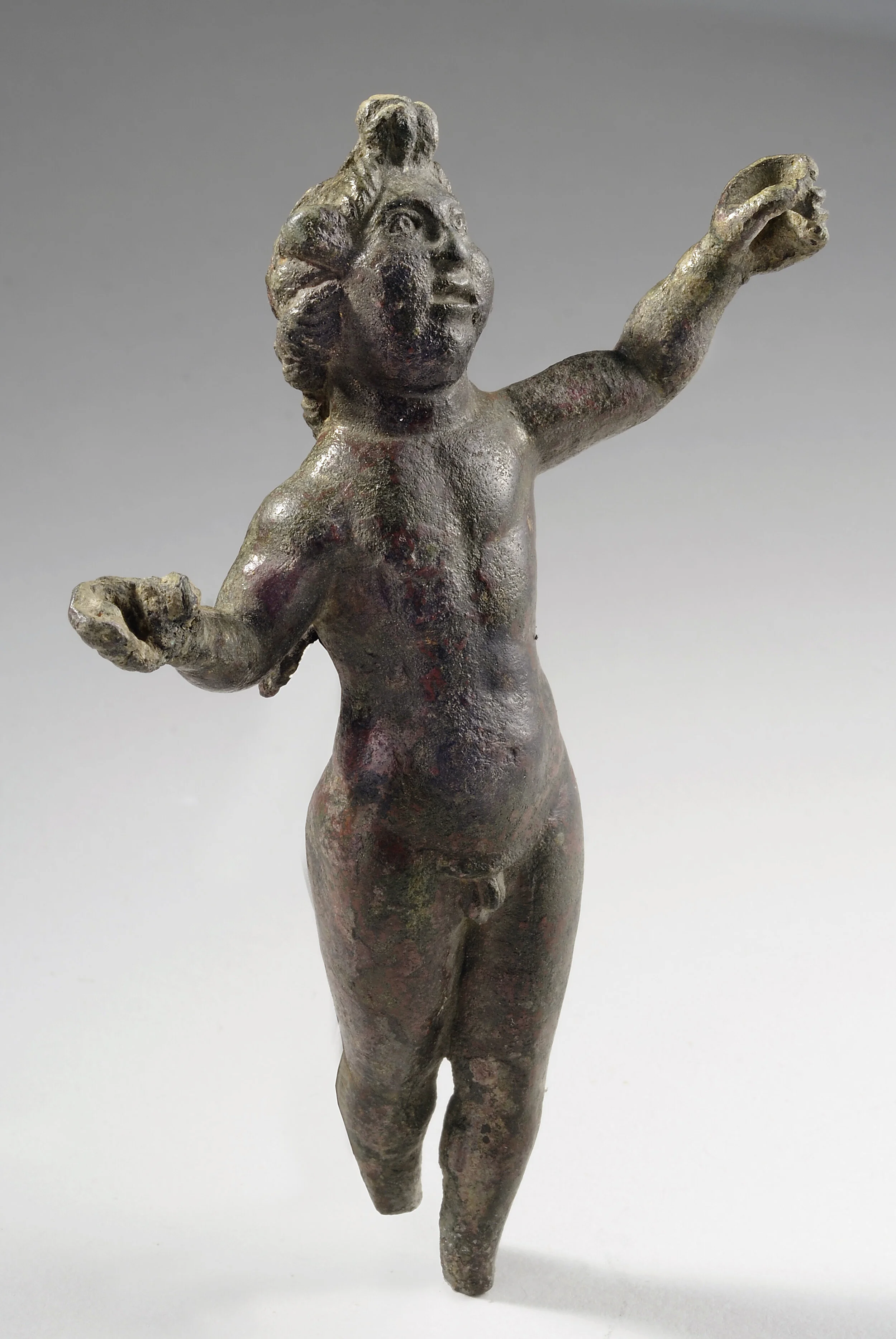Ancient Roman Marble Head of a Philosopher
Ancient Roman Marble Head of a Philosopher
Roman, 3rd century A.D.
Marble
H: 18 cm
PROVENANCE: Ex- French private collection, Paris, acquired ca. 1940
SERIAL NO: 20092
The head, which size corresponds approximately to the half of natural dimensions, is almost entirely sculptured in the round; however, the rendering of the proper right half, which is somewhat recessed, let think that originally this head rather belonged to a relief than to an individual statue.
The represented person is an old man; his face and tall forehead are marked by deep furrows; the crane is partially bald. The abundant hair of the beard and the rest of head is formed by thick divided locks. The position of the neck indicates the torsion to his right, the same direction, where the man turns his head. The face presents a slight asymmetry, the result of the foreshortening as the head was designed to be viewed in three quarters.
The facial features are well accentuated, they are almost grotesque, but characteristic for the age and individuality of the man: the face has the elongated shape with bulging cheeks; the large, wide-open eyes, with heavy lids and widen canthi, are deep-set; by contrast, the eyebrows, sharp relief creases which start at the root of the nose, are spread high above the saggy upper brows, which creates even an exaggerated appearance of the doubled eyebrows. Along with the parted lips this creates an intense and questioning look.
Most obviously, the head belonged to a sculptural scene on the funerary relief, the frontal panel of a sarcophagus of large dimensions, which represented a group of the intellectuals, or a philosopher holding a papyrus scroll, or volumen, and seated in front of the muses, or a person who wished to be represented as litteratus. It was specifically in the 3rd century, when a pater familias (the figure which could appear in two or three scenes on the same sarcophagus) was represented under the features very close to those of an intellectual (a philosopher, writer, playwright) to stress his authority and high social rank, which allowed him to make his own philosophical notions and to live according to the current philosophical perceptions.
In this particular case, the man’s face with the raised eyebrows and thick beard recalls the portraits of Socrates or that of Chrysippos. Pupil of Zenon and Cleanthos and successor of the latter as the head of the Stoic school in Athens, Chrysippos, native of Cilicia, spent all his life in Athens. The considerable number of his surviving Roman portraits proves that he was one of the most known figures of the Greek philosophical tradition during the Imperial period.
CONDITION
The nose is restored in plaster; the marble has a dark patina with partial red occurrence; a few cracks; the back of the neck is completed with plaster to join a modern limestone base whose corners are chipped. On the bottom of the base, there is an old paper label with inscription Scultura greca Socrate.








